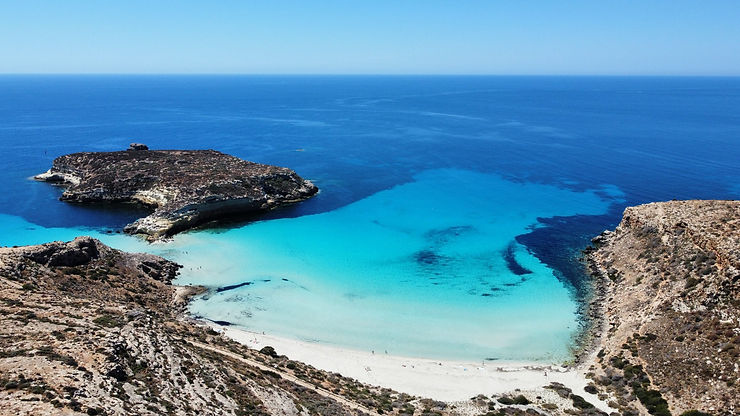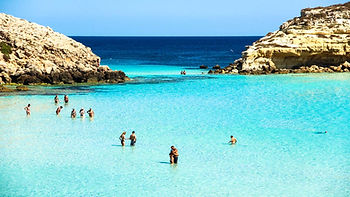
Welcome to today's highlight on our travel blog, where we dive into the allure of Rabbit Beach in Lampedusa, recently acclaimed as the second most beautiful beach in the world by TripAdvisor for 2024. This Sicilian treasure is not just a beach; it's a sanctuary where crystal-clear waters meet white sandy shores, and sea turtles choose to nest. Join us as we uncover the magic of Rabbit Beach, from its challenging yet rewarding access to its commitment to preserving natural beauty and marine life.

La Spiaggi dei conigli (The Rabbit Beach) in Lampedusa has been honored with a truly prestigious accolade, being named the second most beautiful beach in the world in 2024 by Tripadvisor. This enchanting place is renowned not just for its natural beauty, with white sands and crystal-clear waters that rival those of the Caribbean, but also for playing a critical role in the local ecosystem as a nesting site for sea turtles.
The restricted access to Rabbit Beach, possible only by boat or through a short footpath, helps preserve its pristine beauty and maintain the natural environment. The surrounding nature reserve plays a crucial role in protecting the area's biodiversity.
Praia da Falésia in the Algarve, Portugal, has claimed the top spot, recognized for its stunning unspoiled shoreline and commitment to sustainability. Here too, the presence of an adjacent natural park contributes to protecting and enhancing the local biodiversity.
The acknowledgment of these beaches highlights the importance of nature conservation and sustainability in tourism development, showcasing how natural beauty and environmental responsibility can go hand in hand in creating world-class tourist destinations.
For those planning to visit these magnificent beaches, here are some tips to enhance your experience and travel sustainably:
1. Plan Your Visit: Since access to Rabbit Beach is limited, planning ahead can help you avoid crowds and enjoy the natural beauty peacefully. Consider visiting during off-peak times.
2. Respect Nature: These beaches are pristine because of ongoing conservation efforts. Help keep them that way by not leaving any trash behind and respecting wildlife habitats.
3. Stay Hydrated and Protected: The sun can be intense, so bring plenty of water, sunscreen, and a hat to protect yourself from sunburn and dehydration.
4. Explore Responsibly: Stick to marked paths and areas to minimize your impact on the ecosystem, especially important in areas where wildlife, such as sea turtles, are present.
5. Support Local: When choosing accommodations, restaurants, or tours, consider local businesses that practice sustainability and contribute to the conservation of these beautiful places.
6. Learn and Share: Take the opportunity to learn about the local environment and conservation efforts. Sharing your knowledge and experience can inspire others to travel responsibly.
By following these tips, you can enjoy these breathtaking beaches to the fullest while contributing to their preservation for future generations.










Commenti